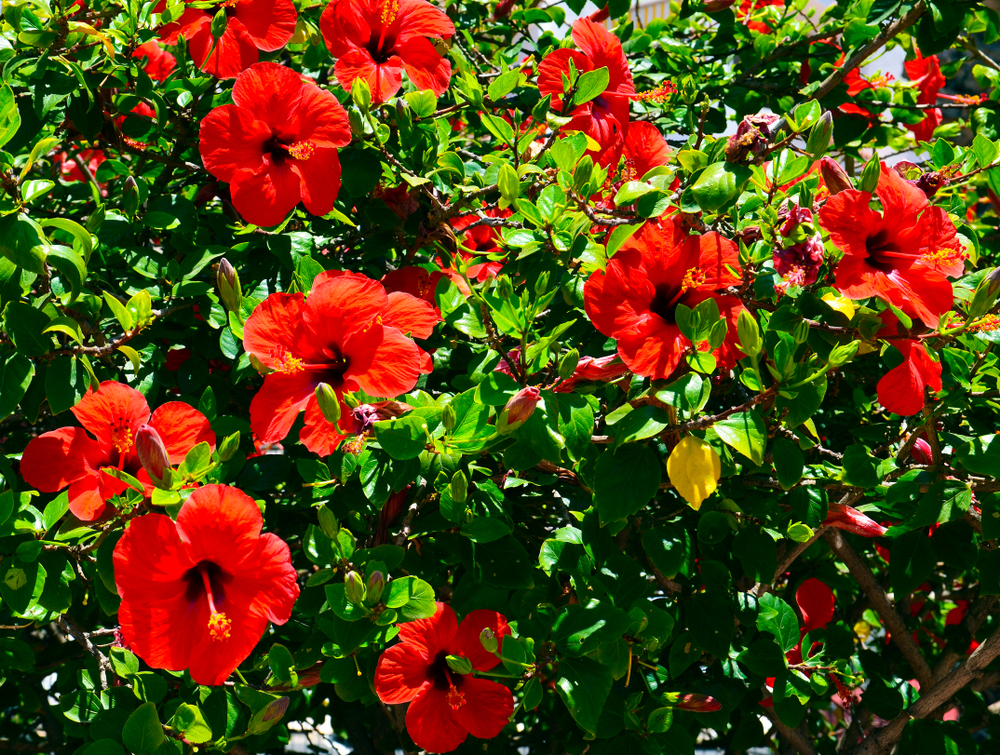HIBISCUS

Scientific name: Hibiscus rosa sinensis
Facts:
• The origin of the plant is tropical Asia, cultivated in China, Japan and Pacific island.• The deep-red flowers named rosa-Sinensis meaning ‘rose of China’.
Traditional uses:
1. Roots and leaves which are anodyne and emmenagogue used to regulate menstruation and stimulate blood circulation.
2. Leaves used as an abortifacient (the agent that induces abortion) and to stimulate expulsion of the placenta after childbirth.
3. The flower was used for regulation of menstrual cycle, for liver disorders, high blood pressure as an antitussive, in stomach pain, for eye problems, as abortifacient and as an aphrodisiac.
4. Young leaves and flowers were used in headache.
5. A decoction of leaves, root and fruits help in treatments of arthritis, boils and coughs.
6. Fruits were employed externally in cases of sprains, wounds and ulcers.
7. Flowers of the plant were used in diabetes, epilepsy, bronchial catarrh and leprosy.
8. Petals were used to stimulate thicker hair growth and to prevent premature greying, hair loss and scalp disorders.
Pharmacological effect:
• Cytotoxic effect
Hibiscus rosa-Sinensis extract possessed a protective effect against tumour promotion stage of cancer development. The ameliorative potential of the extract was investigated in hyperproliferation and oxidative damage caused by benzoyl peroxide and ultraviolet radiation in mouse skin. The aqueous extract inhibited melanoma cell growth in a dose-dependent manner at concentrations that did not affect the growth of non-transformed cells.
• Antimicrobial effect
The antibacterial activity of cold extract of Hibiscus rosa-Sinensis flower possessed maximum zone of inhibition against Bacillus subtilis and Escherichia coli. The hot extract against E. coli and Salmonella sp. The methanol extract showed the highest zone of inhibition against B. subtilis and E. coli. The leaf extract showed high activity against Staphylococcus aureus at very low concentration compared to E. coli.
• Dermatological effect
The extract increased cellular proliferation and collagen synthesis at the wound site, as evidenced by an increase in DNA, total protein and total collagen content of granulation tissues. The extract-treated wounds were found to heal much faster as indicated by improved rates of epithelialization and wound contraction. The hair growth studies revealed that HRSF possessed excellent hair growth-promoting activity by enlargement of follicular size and prolongation of the anagen phase.
Toxicity and side effects:
1. Elevation levels of alanine aminotransferase, aspartate aminotransferase, total and indirect bilirubin urea and creatinine caused hepato-renal toxicity.
2. Enlarged interstitial spaces in kidney
3. Dilated sinusoids
4. Apoptotic nuclei
5. Inflammatory infiltrates inside sinusoidal capillaries in the liver.


Comments
Post a Comment